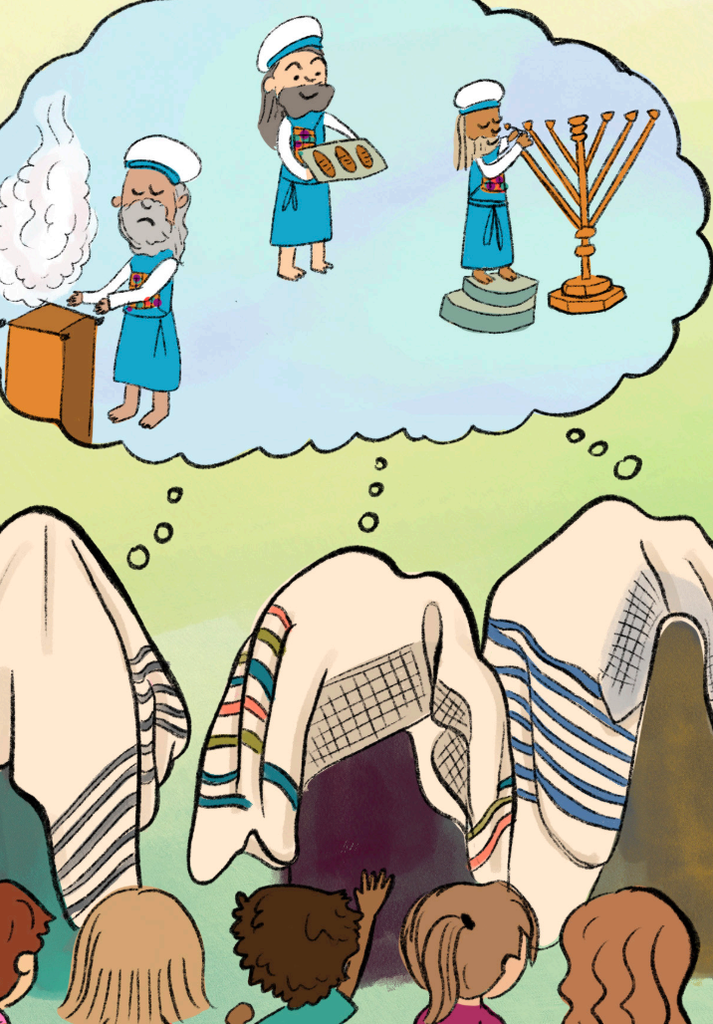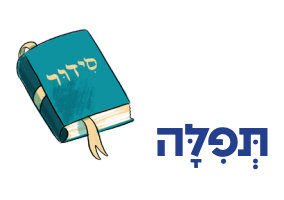Illustration credit: Rebecca Kerzner

Prayer in the Parashah תְּפִלָּה
Here’s how כֹּהֲנִים (kohanim, priests) get described in Parashat Shoftim:
כִּי בָם בָּחַר ה' אֱלֹקֶיךָ לְשָׁרְתוֹ וּלְבָרֵךְ בְּשֵׁם ה'...
For God chose them to serve God and to bless in the name of God…
A midrash on this verse explains:
מַקִּישׁ בְּרָכָה לְשֵׁרוּת: מָה שֵׁרוּת בַּעֲמִידָה אַף בְּרָכָה בַּעֲמִידָה.
Compare the blessing to the service: Just as the service is done standing, so too the blessing is done standing.
This midrash is teaching something about בִּרְכַּת כֹּהֲנִים (Birkat Kohanim, the priestly blessing). This three-part blessing is part of our tefillah, sometimes said by kohanim themselves, and sometimes by the prayer leader. (For more on Birkat Kohanim, see Devash for Parashat Naso 5782!)
The midrash notices that our pasuk connects the way kohanim serve in the Beit Ha-Mikdash and the way they bless the people: Both are done standing up!
- Besides standing, is there another connection between service and giving a blessing? How could giving a blessing be a kind of service to God or to other people?
- What’s the difference between sitting and standing when saying a blessing? Do you feel differently when you are standing to pray vs. when you sit?
- When you imagine people going to a king to ask for something, do you imagine them standing or sitting? Why?

-------------------
-------------------





